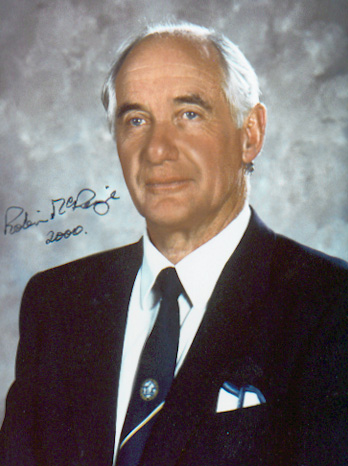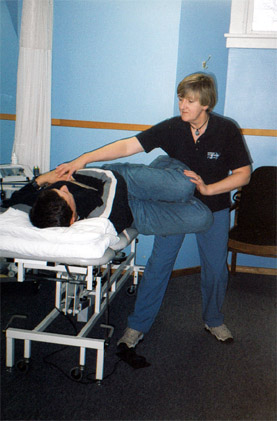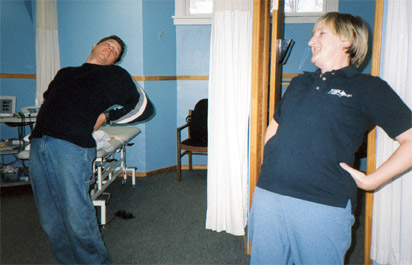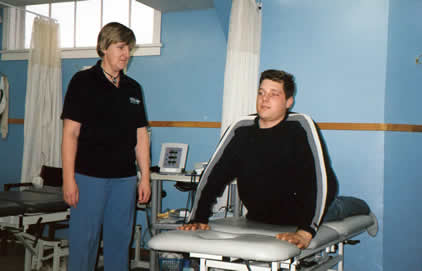McKenzie Spinal Techniques

The McKenzie Method is a philosophy of active patient treatment that emphasizes intervention and prevention. It provides the patient with life-long pain management skills.
Also known as mechanical diagnosis and therapy (MDT), McKenzie is based upon a consistent “cause and effect” relationship between mechanical forces and pain response often accompanied by a change in motion/function.
If your back or neck can be treated with the McKenzie method, you will usually know right away, on the first visit and the second visit will confirm this.
McKenzie credits the patient’s ability to learn the principles and empowers them to be in control of their own symptom management, which can reduce dependency on medicinal intervention.

Tell me, I’ll forget. Show me, I may remember. But involve me and I’ll understand.
– Confucius
Over 8 million people are absent from work each day due to back pain!
A unique healing tool

The McKenzie method promotes the body’s potential to heal itself without medication, heat, cold, ultrasound, needles, surgery, or a repeated force dependent on the practitioner. It also addresses a growing demand from patients and third-party payers for professional rehabilitation services that develop the patient’s self-treatment skills in a cost-effective and time-effective manner.
The achievable goals of McKenzie are to:
- Eliminate symptoms
- Restore full function
- Prevent recurrences
Subjects who received treatment according to the McKenzie principle 5 years earlier had significantly less recurrence of pain and fewer were on sick leave compared with the subjects who received education in mini back school.
– R. Stankovic, O. Johnell.
“Conservative treatment of back pain: A 5-year follow-up study of two methods of treatment.”
Spine 20(4), 1995
Don’t let the pain hold you back any longer.
How it works

Assessment
Unique to the McKenzie Method is a comprehensive and logical step-by-step process to evaluate the patient’s problem quickly. This mechanical examination can “classify” most patient’s problems quickly. This mechanical examination can “classify” most patient conditions by the level of pain or limitation that results from certain movements or positions. A McKenzie assessment can eliminate the need for expensive and/or invasive procedures.
The McKenzie assessment process… was superior to MRI in distinguishing painful from non-painful discs.
– R. Donelson, C. Aprill, R. Medcalf, W.Grant
“A prospective study of centralization of lumbar and referred pain: A predictor of symptomatic discs and annular competence.”
Spine 22(10), 1997
Treatment
McKenzie treatment prescribes a series of individualized exercises. The emphasis is on active patient involvement, which minimizes the number of visits to the clinic. Ultimately, most patients can successfully treat themselves when provided the necessary knowledge and tools. For patients with more difficult mechanical problems, a certified McKenzie clinician can provide hands-on techniques until the patient can self-administer.

Preventative strategy
By learning how to self-treat the current problem, patients gain hands-on knowledge on how to minimize the risk of recurrence and to rapidly deal with recurrence if it occurs. The likelihood of problems persisting can more likely be prevented through self-maintenance.
You are not alone
A staggering 80 percent of the population worldwide will suffer from back pain at least once in their life. Each day, an estimated 800,000 Canadians are not at work because of back pain – a number that is simply too high.
But there is good news. Practitioners worldwide, through the use of the McKenzie method, are striving to successfully decrease that number. In fact, one study found 90 percent of those who suffer from back pain can be successfully treated by the McKenzie Method.
And it works faster than you’d expect. Another study reported recovery for 85-90% of McKenzie patients in an average of 6.6 visits! Bottom line:
You don’t have to live with back pain.

Meg meets Robin McKenzie



